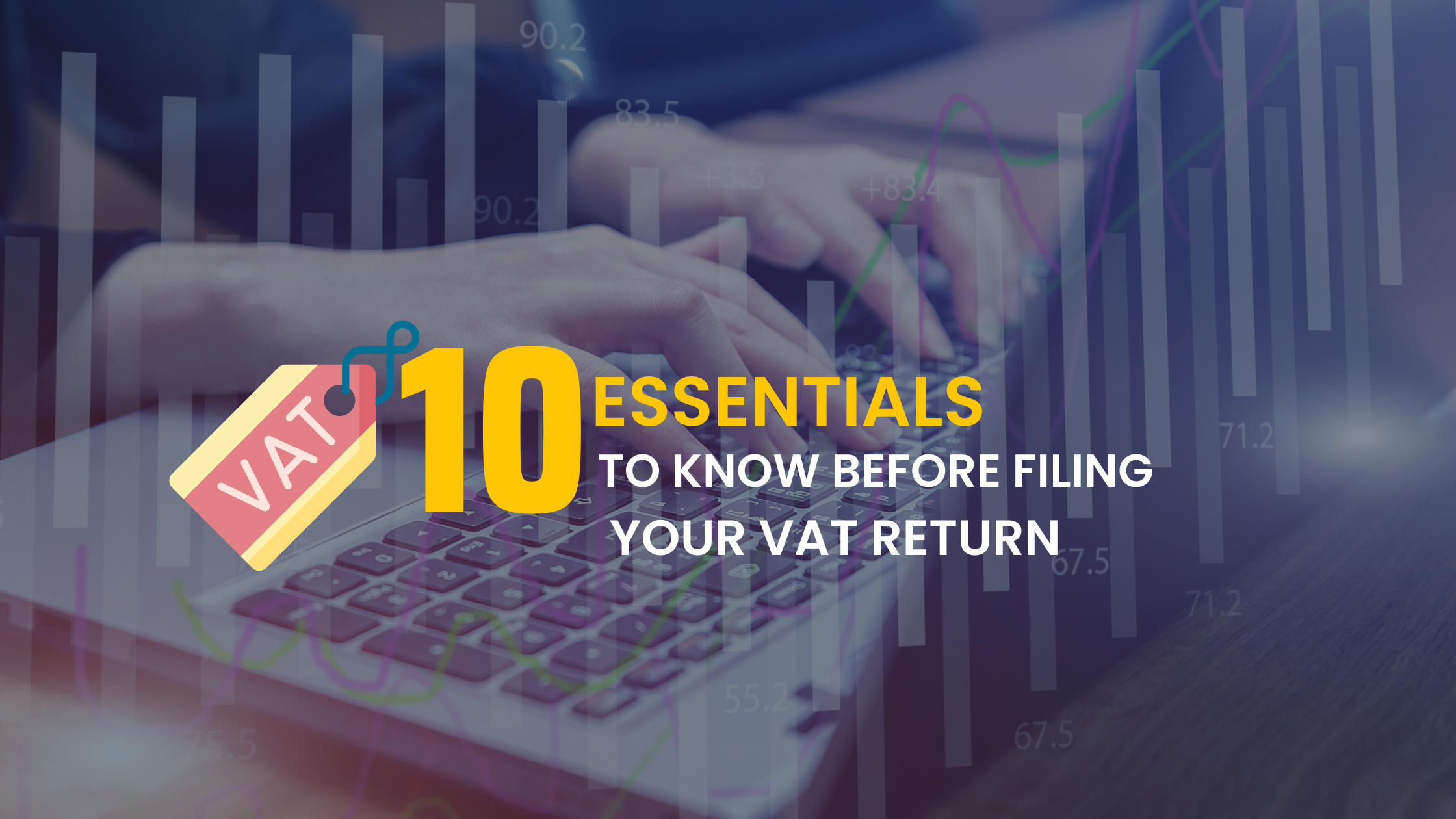HERE ARE THE 10 ESSENTIALS TO KEEP IN MIND BEFORE FILING YOUR VAT RETURNS IN THE UAE !
Confusion or lack of knowledge when dealing with the United Arab Emirates’ Value Added Tax may result in incorrect filings and potentially expose your business to penalties.
As a business leader or entrepreneur, you must ensure your business is aligned with local regulations at all times.
To avoid facing any issues with the Federal Tax Authority (FTA), here are 10 key tips to take note of, as you present your VAT Returns
1. Three Calendar Months as the Standard Tax Period.
The standard tax period applicable to a taxable person shall be a period of three calendar months ending on the date that the Federal Tax Authority (FTA) determines. Such a period would be different for each entity.
2. Tax Returns Submission Date
A Tax Return must be submitted online to the FTA no later than the 28th day following the end of the Tax Period concerned (or by such other date as directed by the FTA). VAT payment must also be reflected in the FTA portal no later than the 28th day following the end of the Tax Period concerned. If the 28th of the month falls on a weekend or a national holiday, the deadline for filing the VAT Return or making a payment is extended to the next business day.
3. Emirate-specific VAT on Sales
The VAT on sales must be reported emirates-wise. That is, the standard-rated supplies are reported separately for Abu Dhabi, Dubai, Sharjah, Ajman, Umm Al Quwain, Ras Al Khaimah, and Fujairah.
4. Zero-rated Supplies & Exempt Supplies
The zero-rated supplies and exempt supplies do not have any effect on the VAT Amount; they must both be reported to the authority through the periodical return submissions.
5. Maintaining Documentation for Exports Goods
Though the exports of goods get reported as zero-rated, the UAE VAT regulations stipulate that a business must maintain export documents issued by the local Emirate Customs Department in respect of Goods leaving the state. The commercial evidence shall include airway bill, bill of lading, consignment note, certificate of shipment, etc.
6. Import of Services Reporting
Import of services must also be reported under the reverse charge mechanism. This implies the VAT amount must be shown as both liability and an asset. The input VAT could be claimed as a credit only when all the compliance requirements set by the FTA are fulfilled.
7. Foreign Currency Transactions Reporting
The foreign currency transactions are to be reported in AED as per the UAE Central Bank Rate. The official website of the central bank of UAE provides the exchange rates against UAE Dirham for VAT-related obligations.
8. Recovering VAT on Input Expenses
VAT on input expenses can be rightfully recovered only if the invoice is fully compliant according to the requirements set by the regulations and the clarifications from the authorities. The compliance requirements are separately clarified for a simple tax invoice and a full tax invoice.
9. Recovering Input Tax & Conditions
Input tax must be recovered in the first tax period, provided two conditions satisfied:
- a) The tax invoice is received; and
- b) Consideration is paid or an intention to make the payment of consideration of the supply before the expiration of six months after the agreed date of payment.
If the input tax is not recovered in the tax period under which both conditions are satisfied, the taxable person can only recover the input tax in the immediate next tax period. If tax input isn’t recovered during any of the first two taxation periods, then taxable entities are required in submitting a voluntary disclosure.
10. Keeping Records for 5 Years
The VAT Registered individual or business must keep the required records for a minimum of 5 years (15 years in case of real estate owners) after the end of the tax period to which those records relate. However, there could be specific cases where the FTA may require the person to retain the records for a further period.
